As temperatures cool and soil moisture increases in the fall, plants focus on root development rather than above-ground growth. That makes fall the “prime time to prep your yard for the next growing season,” according to This Old House landscape contractor Roger Cook. Follow Cook’s comprehensive fall landscaping checklist to set up your lawn and garden for success next spring.
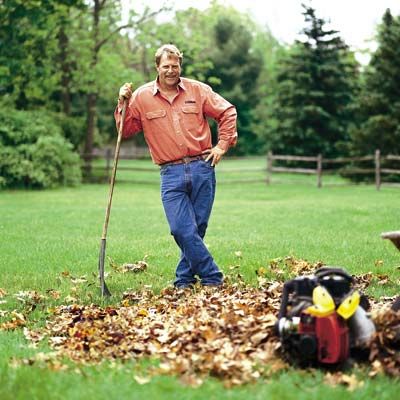
Aerate the Lawn
If you notice water pooling on your grass after rainfall, it’s a sign that your soil is compacted. The fix for this is aeration—a process that allows water, air, and nutrients to penetrate the soil and reach grass roots more effectively. Regular aeration each fall ensures a greener, healthier lawn come springtime.
For small yards, a garden fork can suffice, but larger lawns benefit from a walk-behind aerator. These machines pull out soil plugs about 3 inches deep, which naturally break down by spring, improving soil structure and lawn health.
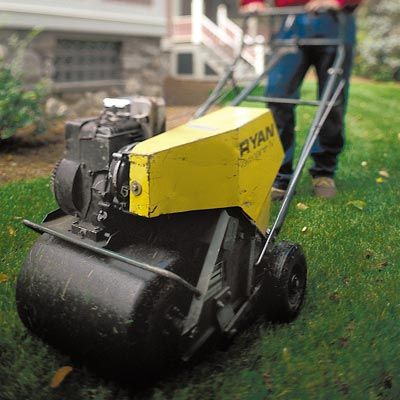
Feed Your Grass
While it’s wise to cut back on fertilizer for perennials in late summer, your lawn can benefit from a fall feeding. “Grass roots keep growing until the ground gets down to around 40 degrees,” Cook says, “so this is a good time to feed them.” A well-fed lawn is better equipped to withstand winter stresses and disease.
Apply a high-phosphorus (12-25-12) fertilizer mix to lawns in the fall. This nutrient balance encourages strong root development, which helps your lawn green up earlier and more vigorously in spring.
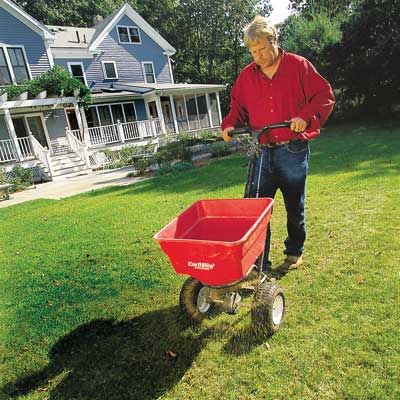
Mow a Final Time
Before winter sets in, give your lawn a final trim. However, be cautious not to cut too low, as grass produces most of its food in the upper blade. Striking the right balance ensures your lawn stays healthy through winter and emerges strong in spring.
Cook recommends cutting the grass to about 1¼ inches for the last mow of the season. This shorter length offers several benefits. “Disease has a harder time with shorter grass,” Cook says, “and fallen leaves blow across the lawn because they have nothing to latch on to.”
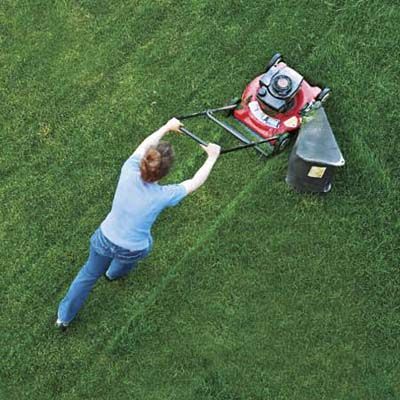
RELATED: How to Put Your Lawn Mower to Bed
Collect Leaves
Fallen leaves can smother your lawn if left unattended, so it’s crucial to remove them. To make this task easier, rake leaves onto a plastic tarp for easy transport. But don’t let those leaves go to waste—they’re perfect for composting.
Add your raked leaves to a compost bin, along with any leaves you remove from your gutters. A simple chicken-wire pen will do. Turn the leaf pile weekly with a garden fork to aerate it. By next year, you’ll have nutrient-rich “black gold” to nourish your lawn, flower beds, and shrub borders.
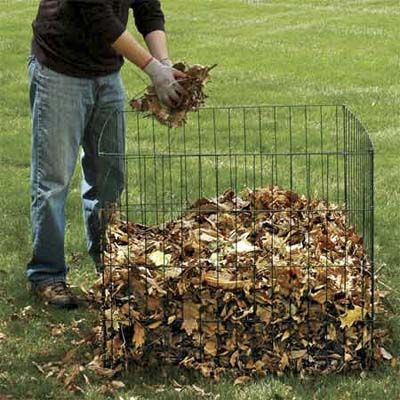
RELATED: 7 Essential Steps to Composting
Plant New Shrubs
In many regions, early fall is an excellent time to plant new shrubs. The cool, moist soil conditions encourage strong root establishment before winter dormancy. Here’s a basic guide for planting shrubs:
- Dig a hole twice the diameter of the root ball and 2 inches shallower than its full height.
- Position the shrub in the hole, ensuring the top of the root ball is at ground level.
- Backfill with soil and water thoroughly to settle the soil.
- Add more soil around the root ball if needed, but avoid packing it down with your foot.
- Apply a layer of mulch around the base of the shrub, keeping it away from the trunk.
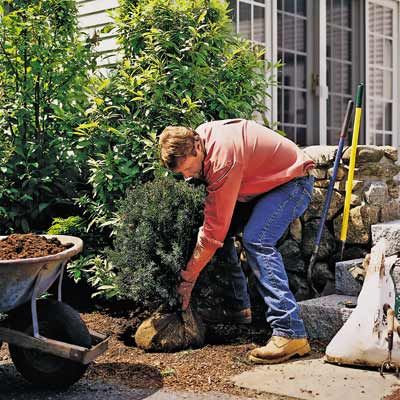
Be sure to choose species that are well-suited to your local climate. Consulting with your local nursery can provide valuable insights into which shrubs are most likely to thrive in your area.
RELATED: How to Mulch Plant Beds
Trim Dead Limbs
Winter snow and winds can cause weak or dead branches to break, potentially damaging your property or causing injury. “For big jobs, call in the pros,” Cook advises. However, you can handle smaller pruning tasks on ornamental trees yourself. A proactive approach protects your trees from further damage and promotes healthier growth in the spring.
Regularly inspect your trees for dead or weakened branches to prevent accidents and maintain the overall health of your landscape. Cut cracked, loose, and diseased limbs close to (but not flush with) the trunk. Leave the pruning wounds exposed to heal naturally.
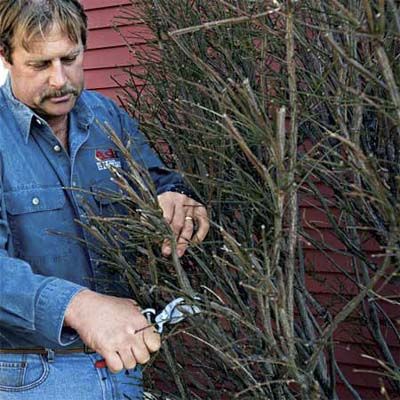
Cut Back Perennials
Fall is the perfect time to tidy up your perennial beds. Start by removing tired annuals, which can harbor pests like snails and slugs that breed in fall. Trim spent perennial foliage down to the ground. This practice redirects energy to the roots, strengthening the plant for the next season. More space between plants often results in more abundant flowers.
Every three years, divide crowded tuberous plants like irises and daylilies. This not only rejuvenates the plants but also allows you to expand your garden or share with friends. Be sure to remove any plant debris, too, as it can harbor overwintering insects and diseases.
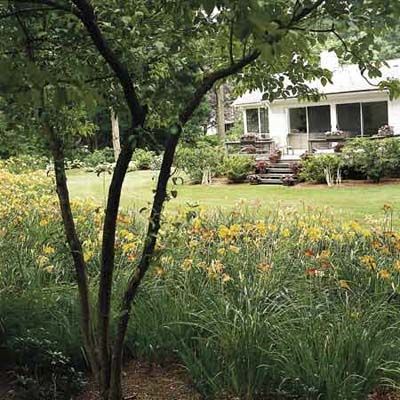
RELATED: How to Divide Perennials
Mulch Young Plants
Protect new plantings by applying a layer of mulch after a light frost but before the ground freezes. Mulching insulates plant roots from extreme temperature fluctuations, helps the soil retain moisture, prevents soil erosion, and suppresses weed growth.
Apply a 2- to 4-inch layer of mulch around young plants, being careful not to pile it against the stems or trunks. Too much mulch can smother roots and encourage pest problems, so till any decomposed layers of mulch into the soil before applying fresh mulch. Use organic materials such as chopped leaves, weed-free straw, or wood chips, which will improve the soil as they decompose.
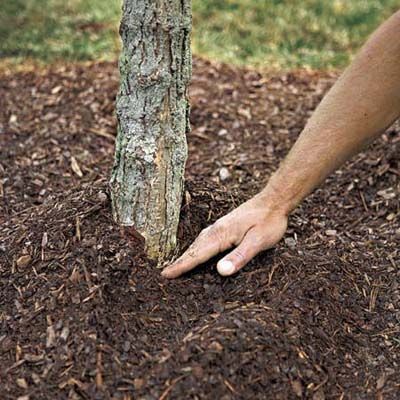
Dry Out Drip Systems
If you use a drip irrigation system, you need to take a few steps to prevent winter damage. Standing water in the tubing can freeze and crack as the temperature drops, leading to costly repairs in spring. Roger offers a simple method for small systems:
- Shut off the water supply to the system.
- Unscrew the tap-joint adapter.
- Use a compressor set to a high-volume, low-pressure setting.
- Insert the air hose where the system normally attaches to the tap.
- Blow out all the water from the lines.
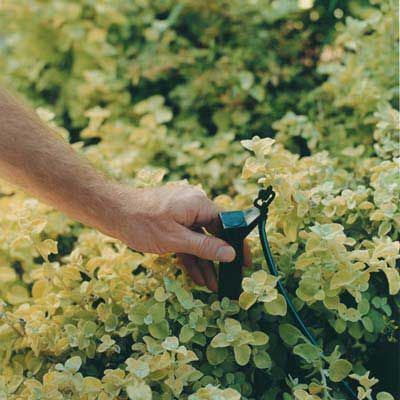
“Blowing out the water avoids having to uproot the entire system,” Cook explains, saving you time and effort in the long run.
Prepare Yard Tools for Storage
As you wrap up your fall landscaping tasks, take time to clean and maintain your gardening tools before storing them for winter. Clean off dirt and debris, sharpen blades, and apply a light coat of oil to metal parts to prevent rust. Drain gas from power equipment or add a fuel stabilizer.
Proper tool maintenance ensures they’ll be ready for action when spring arrives. Store tools in a dry, sheltered place to prevent weather-related damage and extend their lifespan.
Plan Your Yard for Spring
While working on your fall landscaping checklist, take notes on areas you’d like to improve or change next year. Fall is an excellent time to plan new garden beds, research plants you’d like to add, or sketch out landscape design ideas. By planning ahead, you’ll be ready to hit the ground running when the new growing season begins.
If you need a little inspiration, consult gardening books or online resources. Then make a list of supplies you’ll need to turn your plans into reality. Having a clear vision and a shopping list ready can make the transition from planning to planting seamless and enjoyable.
